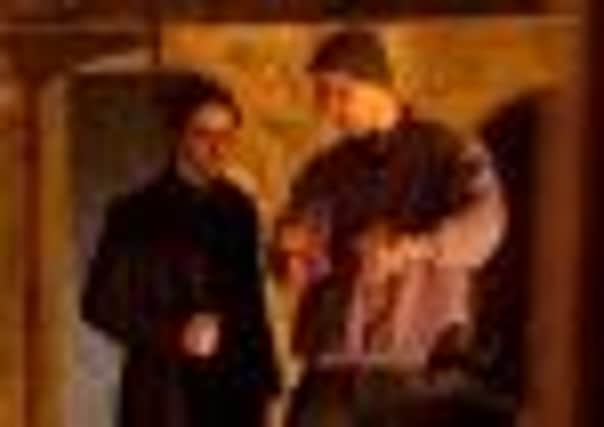An appointment with fear in the remote depths of the Dales


Horror movie-goers, particularly Americans, have a distorted view of Yorkshire. Thanks to 1981’s An American Werewolf in London many believe outsiders are unwelcome and that those that dare to venture into the dark valleys of the Broad Acres will come to a bad end.
The isolated, rain-drenched village of East Proctor in American Werewolf offered no safe abode to the two unfortunate backpackers that strayed there. The oasis of The Slaughtered Lamb pub was anything but, and only death awaited them on the bleak moors.
Advertisement
Hide AdAdvertisement
Hide AdJames Watkins, director of The Woman in Black, was anxious to avoid too much of a similar mood. “We wanted to have a truth about the villagers,” reveals Watkins. “We didn’t want them to be yokels, and I didn’t want it to be like you’d just walked into The Slaughtered Lamb. I wanted to feel the pain of these people’s loss and the fear that underlined their behaviour.”
Finding a real life location to play the odd village of Crythin Gifford proved even more challenging.
“In the 21st-century, obviously anywhere we’d find would be busy and full of cars and road signs and newer buildings that needed covering up,” explains production designer Kave Quinn.
“We wanted to try and find somewhere that had almost been untouched by time, and the village we found, Halton Gill, was right in the middle of the Yorkshire Dales, so it isn’t anywhere you’d ever pass through. It hadn’t been over-developed, so all the houses are original from something like 400 years ago.”
Advertisement
Hide AdAdvertisement
Hide AdWatkins goes further. “Halton Gill really was this integrated sense of a village. It didn’t need a fantastic amount of dressing. From a practical point of view everything’s sort of in the same place so from a shooting point of view, practically, it makes it cheaper and easier and faster. But from a pictorial point of view it has sense of scale, a sense of bleakness, a sense of the weather…
“[We shot in] November, and it was bloody freezing. It was cold, it was raining. The thing about rain is that it rarely reads on film unless it’s really, really hard. Film rain is so hard to make it real. Everyone was totally soaked through. The way the moisture hangs in the sky gives it a really heavy, foreboding sense in terms of lighting. It just gives you that sense of [place].
“Also it’s an antidote to American locations. I really wanted to get out and shoot British locations. In Halton Gill it’s actually quite a de-saturated, austere landscape, and remote – a complete otherness from London, I suppose. It was just a wonderful place. And there was no ‘phone signal!”
Much of the drama takes place in a creaking old house and the landscape of the Dales also offered some balance to the scenes of intense claustrophobia.
Advertisement
Hide AdAdvertisement
Hide Ad“A lot of the film is set inside the house so it becomes quite tense.” says Watkins. “You want to make sure that the times outside the house really breathe and have a real scale so people get the full cinematic experience.”
The result is a film which promises plenty of heart-in-the- mouth moments, but Watkins hopes if will deliver much more.
“If you buy a ticket for a comedy it has to have laughs. If you buy a ticket for a ghost story it has to scare you, that’s the journey you want to go on. But for me that’s not enough. Yes, I want people to be scared, but if they have tears in their eyes at the end of the film, that’s gold dust.”